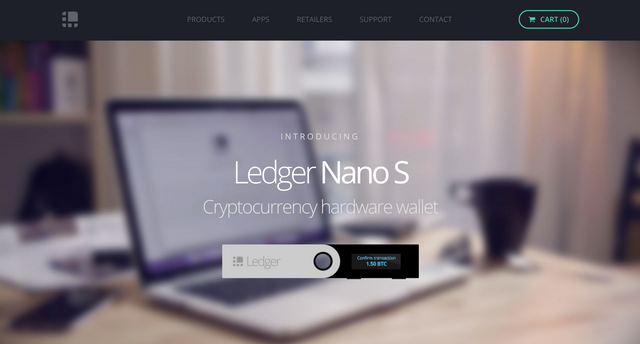
Recently I attended the North American Bitcoin Conference in Miami. Ledger, one of the leading hardware wallets manufacturers were selling their merchandise at the event and I decided to finally do my Ledger Nano S review which I have postponed for too long.
So I bought myself a specially engraved Ledger Nano S created just for the conference and today I’m testing it out for the first time. If you’ve been an avid reader of @a-blockchain you probably know I’m a long time fan of TREZOR, Ledger’s main competitor. But I’ve been hearing so many good things about the Ledger Nano that I decided to do a TREZOR vs Ledger type of comparison.
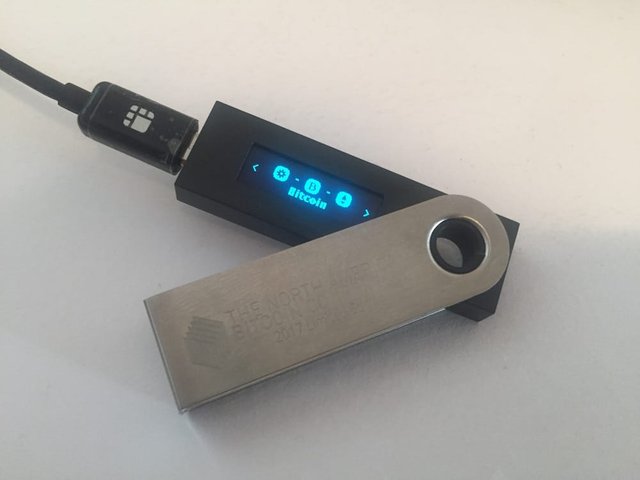
Before I begin my review a quick word about Bitcoin hardware wallets. Hardware wallets are probably the most robust form of security you can have for your Bitcoins or any other cryptocurrency. They allow you to send and receive Bitcoins on any computer, even one that is compromised with malware, with the knowledge that your transaction will still go through as intended. For more information about Bitcoin wallets in general watch out latest Bitcoin Whiteboard Tuesday episode.
The way the hardware wallets achieve maximum security is by storing your <rel="tooltip" title="A secret (long) number that allows bitcoins to be spent. The private key is mathematically related to all Bitcoin addresses and public keys generated from it.">private key
I’ve reviewed the former Ledger model, the Ledger Nano in the past. Back then I concluded that the added protection that a TREZOR wallet gives you with its second screen protection is superior to the Ledger Nano. However, the Ledger Nano S now features a second screen feature as well. So this comparison is going to be interesting.
Design and user interface
Design-wise the products are pretty much the same. Both are small and compact, however, the Ledger Nano S does have a slight advantage in the sense that its metal casing makes it more durable in my opinion (and also a bit sexier). Both wallets will both fit pretty easily into your pocket or hand as can be seen below.
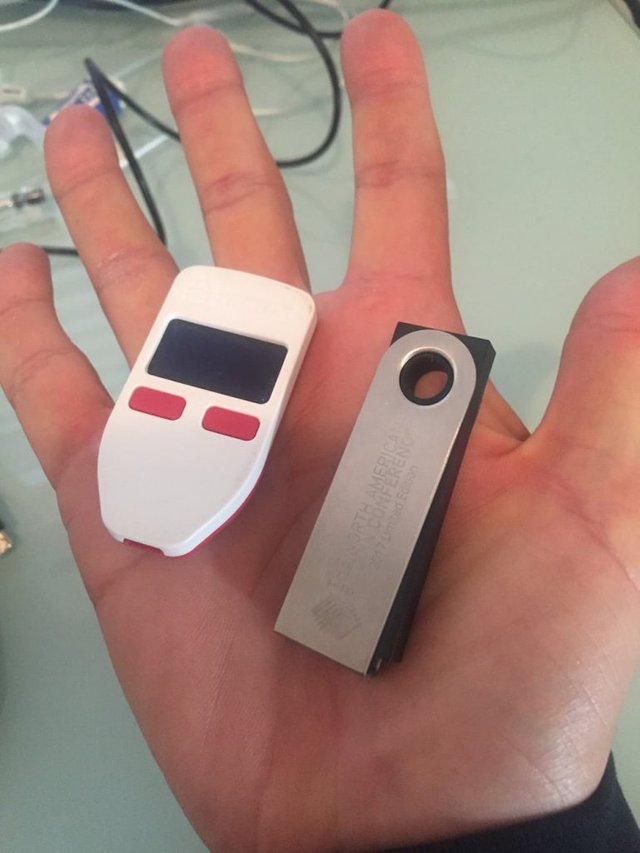
The way the Ledger Nano S works is pretty similar to any <rel="tooltip" title="A bitcoin wallet that uses a physical piece of hardware in order to operate and keep it more secure. Examples of hardware wallets are TREZOR, LedgerWallet and Keepkey. A hardware wallet is usually more secure since it's considered to be a form of cold storage.">hardware wallet When you first set it up you will choose a PIN to protect the device from unwanted access. Later, you will receive a 24-word seed that will be used to create your private keys (this is what’s known as an HD wallet, more on that here). This seed should be written down in a safe place and NOT on your computer, as whoever knows this seed has control over your Bitcoins. A good suggestion would be to write this seed down using a Cryptosteel device.
The Ledger Nano S has two buttons that allow you to control it. The initial set up of the device is pretty simple and takes about 3 minutes. Most of the time is spent on writing down your seed.
This seed creation is one of the places where the second screen comes into play. If your computer is compromised a hacker will be able to see the seed if it’s displayed on your screen. This is exactly why the seed words are shown on the small device screen that is tamperproof, so you know that only you see your seed.
Once the device is set up, all that’s left is to install an app that allows you to interface with the device (i.e. send and receive Bitcoins).
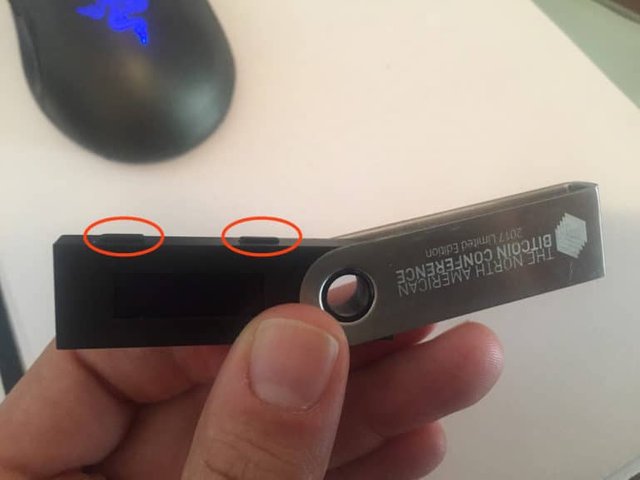
The app I used is a Chrome extension that gives you the following functionalities:
- General account details
- Sending Bitcoins from your hardware wallet
- Generating your Bitcoin address to receive Bitcoins
- Settings for your app (e.g. exchange rate, language, etc.)
The app is pretty similar to the one TREZOR uses although it has a sleeker design.
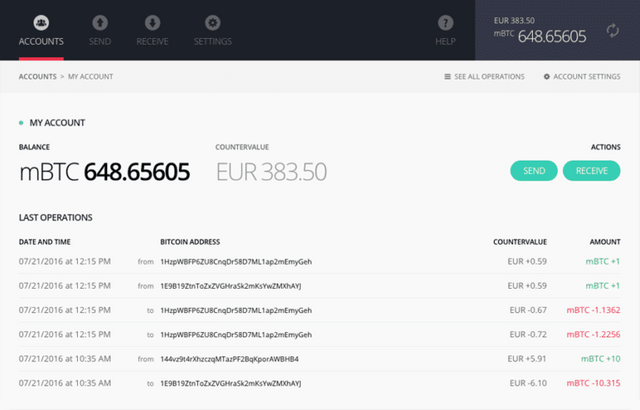
The interface (as shown above) is pretty intuitive and doesn’t require any manual to get the hang of it. Also, you can rename accounts and don’t have to call them in general names like “account #1”. TREZOR allows this as well but requires you to connect a Dropbox account.
The Ledger Nano S can also use existing Bitcoin wallets instead of the current chrome extension interface. Such wallets include MyCellium, Electrum, Bitgo, GreenBits, Copay and MyEtherWallet.
Here’s a complete review of how the device works done by BTC Sessions on YouTube:
Support of altcoins
The Ledger Nano S includes Bitcoin, Litecoin, Ethereum and Ethereum Classic companion apps, and other <rel="tooltip" title="The full list of mined blocks since the creation of Bitcoin. There is also a company called Blockchain.info which supplies various Bitcoin services such as a block explorer and a bitcoin wallet but they have no control or authority over Bitcoin's blockchain.">blockchain
- Bitcoin
- Ethereum / Ethereum Classic
- Litecoin
- Dogecoin
- Zcash (z-addresses are not supported)
- Dash
- Stratis
You can send and receive payments, check your accounts and manage multiple addresses for each currency from the same device.
TREZOR on the other hand recently announced that they have partnered with MyEtherWallet to support Ethereum on their device as well. Other currencies supported through TREZOR are Dash, Zcash and Litecoin (via Electrum LTC).
Company reputation
Ledger was founded in 2015 in France. The company has since gained substantial traction in the Bitcoin and cryptocurrency sphere and has grown to be a worthy competitor to SatoshiLabs (the creators of TREZOR). TREZOR, on the other hand, has been on the market since 2014.
Both Ledger and TREZOR use open source code for their apps, and both have demonstrated excellent customer support and stability in the past few years. Even though TREZOR is the more mature and respected company, it’s hard to say the Ledger falls behind.
Ledger’s Price tag
The Ledger Nano S sells for €58 (about $65) while the TREZOR sells for $99. This makes the Nano S a more attractive bargain since their features are almost identical. One can argue that the TREZOR can also act as a password manager but I’m not sure how useful this feature is at the moment.
So who’s the winner?
In all honesty, I think the Ledger Nano S wins due to the lower price. But both companies created a great product. The Ledger Nano S seems to have the upper hand in design and usability, while TREZOR’s reputation has more impact in the community (although not by much). Since most of us are price sensitive in this case the price tag tips the scale towards Ledger.
Personally, I use a TREZOR, mainly because when I first started using hardware wallets Ledger wasn’t around yet. Today I think I may start using both, storing some of my funds on a TREZOR and some on a Ledger. I have to say that the progress Ledger has made in the past year is truly impressive, and their product shows it.


![]()

![]()
- Click on the
 and get your the reward $ after in 7 days
and get your the reward $ after in 7 days
@a-blockchain What’s the thought now about nano s vs trezor when Nano sold out and is double the price?
Downvoting a post can decrease pending rewards and make it less visible. Common reasons:
Submit
Hi @ghmboyan ,
Personally I believe that the Trezor is slightly better than the Nano in terms of security. This is because all the hardware in the Trezor is open source, whereas the Nano has one or two proprietary chips onboard.
The Trezor supports fewer altcoins than the Nano but then again, one has to juggle the wallets in the Nano’s memory if using more than 4 (or so) coins, so this balances out.
So I’d say that these devices are priced right. The Trezor is a bit more trustable but it’s also a bit more expensive. Therefore, if the Nano is twice the price I would definitely choose the Trezor.
Note that a new model of the Trezor is coming, although I believe its pre-orders are sold out. It’s not much different as far as I know, it just has a nicer colour touch-screen.
Downvoting a post can decrease pending rewards and make it less visible. Common reasons:
Submit
Hi! I am a robot. I just upvoted you! I found similar content that readers might be interested in:
https://99bitcoins.com/ledger-nano-s-review-bitcoin-wallet-better-than-trezor/
Downvoting a post can decrease pending rewards and make it less visible. Common reasons:
Submit
@a-blockchain The fact that you can only store 4 coins at any one time and must swap apps to access other coins for trading is quite an inconvenience. Why in the world would I want to spend about a $100 for this when Trezor can store all CR20 coins, etc as well as the common ones such as bitcoin, litecoin, ether, etc? Obvious choice. They could add some more memory but I guess Ledger just want to maximize profits and provide as little as possible.
From 2018 Ledger Nano S Review - Read Before Buying...NOT What I Expected
Downvoting a post can decrease pending rewards and make it less visible. Common reasons:
Submit
ik heep en ledger nano s en geweldig product maar niet voor de hygenaar maakt winst met het maniputie van hun sofwaare hieder dag 1tot 5 euro aftenemen van mijn portefeuilleis is diet eerlijkheid nee ik koop en nano s en maag mijn portefeuille leeg
Downvoting a post can decrease pending rewards and make it less visible. Common reasons:
Submit
Can the Ledger Nano S be used on a tablet instead of a computer?
Downvoting a post can decrease pending rewards and make it less visible. Common reasons:
Submit
Hey @beautiful-barbie ,
Well, tablet support is mentioned here on Ledger’s page about the OTG cable to connect to non-USB ports:
https://support.ledgerwallet.com/hc/en-us/articles/115005463729-OTG-Kit-adapters-for-your-Ledger-devices
I’m not sure about your particular tablet though and I don’t want to steer you wrong. I think it’s quite likely but to be certain I suggest that you reach out to Ledger and get a definitive answer from them:
https://support.ledgerwallet.com/hc/en-us/requests/new
Downvoting a post can decrease pending rewards and make it less visible. Common reasons:
Submit